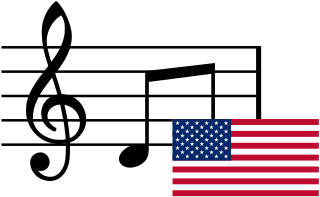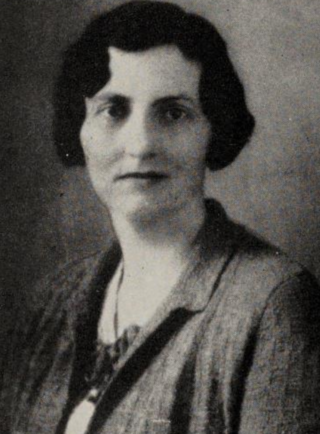Related Research Articles
Education reform is the name given to the goal of changing public education. The meaning and education methods have changed through debates over what content or experiences result in an educated individual or an educated society. Historically, the motivations for reform have not reflected the current needs of society. A consistent theme of reform includes the idea that large systematic changes to educational standards will produce social returns in citizens' health, wealth, and well-being.
Progressive education, or educational progressivism, is a pedagogical movement that began in the late 19th century and has persisted in various forms to the present. In Europe, progressive education took the form of the New Education Movement. The term progressive was engaged to distinguish this education from the traditional curricula of the 19th century, which was rooted in classical preparation for the early-industrial university and strongly differentiated by social class. By contrast, progressive education finds its roots in modern, post-industrial experience. Most progressive education programs have these qualities in common:

Home economics, also called domestic science or family and consumer sciences, is a subject concerning human development, personal and family finances, consumer issues, housing and interior design, nutrition and food preparation, as well as textiles and apparel. Much less common today, it was, and is, mostly taught in secondary school or high school.
Science education is the teaching and learning of science to school children, college students, or adults within the general public. The field of science education includes work in science content, science process, some social science, and some teaching pedagogy. The standards for science education provide expectations for the development of understanding for students through the entire course of their K-12 education and beyond. The traditional subjects included in the standards are physical, life, earth, space, and human sciences.
The National Council of Teachers of English (NCTE) is a United States professional organization dedicated to "improving the teaching and learning of English and the language arts at all levels of education. Since 1911, NCTE has provided a forum for the profession, an array of opportunities for teachers to continue their professional growth throughout their careers, and a framework for cooperation to deal with issues that affect the teaching of English." In addition, the NCTE describes its mission as follows:
The Council promotes the development of literacy, the use of language to construct personal and public worlds and to achieve full participation in society, through the learning and teaching of English and the related arts and sciences of language.

The Ministry of Education is the ministry of the Government of Ontario responsible for government policy, funding, curriculum planning and direction in all levels of public education, including elementary and secondary schools.

Music education is a field of practice in which educators are trained for careers as elementary or secondary music teachers, school or music conservatory ensemble directors. Music education is also a research area in which scholars do original research on ways of teaching and learning music. Music education scholars publish their findings in peer-reviewed journals, and teach undergraduate and graduate education students at university education or music schools, who are training to become music teachers.

Education in Nigeria is overseen by the Federal Ministry of Education. The local authorities take responsibility for implementing state-controlled policy regarding public education and state schools. The education system is divided into Kindergarten, Primary education, Secondary education, and Tertiary education. Nigeria's federal government has been dominated by instability since declaring independence from Britain, and as a result, a unified set of education policies is yet to be successfully implemented. Regional differences in quality, curriculum, and funding characterize the education system in Nigeria. Currently, Nigeria possesses the largest population of out-of-school learning youths in the world. The educational systems in Nigeria are divided into two the public where the student only pays for Parents Teachers Association (PTA) while the private where students pay school fees and some other fees like sports, exam fees, computer fees etc. and they are costly

Chicano studies, also known as Chicano/a studies, Chican@ studies, or Xicano studies originates from the Chicano Movement of the late 1960s and 1970s, and is the study of the Chicano and Latino experience. Chicano studies draws upon a variety of fields, including history, sociology, the arts, and Chicano literature. The area of studies additionally emphasizes the importance of Chicano educational materials taught by Chicano educators for Chicano students.

Waldorf education, also known as Steiner education, is based on the educational philosophy of Rudolf Steiner, the founder of anthroposophy. Its educational style is holistic, intended to develop pupils' intellectual, artistic, and practical skills, with a focus on imagination and creativity. Individual teachers have a great deal of autonomy in curriculum content, teaching methods, and governance. Qualitative assessments of student work are integrated into the daily life of the classroom, with standardized testing limited to what is required to enter post-secondary education.
The history of education in the United States covers the trends in formal educational in America from the 17th century to the early 21st century.

Tracking is separating students by academic ability into groups for all subjects or certain classes and curriculum within a school. It may be referred to as streaming or phasing in some schools.

Music education in the United States is implemented in many schools as a form of modern-day teaching. Music education is a field of study that focuses on the teaching and application of music in the classroom. As this addition to the curriculum progresses, the effects and implications to this course of study are being widely debated, especially the factors pertaining to. Researchers are able to follow its progression from its earliest known application within the field of academics.
English studies is an academic discipline taught in primary, secondary, and post-secondary education in English-speaking countries. This is not to be confused with English taught as a foreign language, which is a distinct discipline. The English studies discipline involves the study, analysis, and exploration of English literature through texts.
The Secondary School Mathematics Curriculum Improvement Study (SSMCIS) was the name of an American mathematics education program that stood for both the name of a curriculum and the name of the project that was responsible for developing curriculum materials. It is considered part of the second round of initiatives in the "New Math" movement of the 1960s. The program was led by Howard F. Fehr, a professor at Columbia University Teachers College.
The Struggle for the American Curriculum, 1893–1958, is a book written by historian of education Herbert Kliebard and published by Routledge & Kegan Paul in 1986.
The Eight-Year Study was an experiment that tested how American progressive secondary schools would prepare their students for college when released from the curricular restrictions of college admissions requirements. Between 1933 and 1941, the Progressive Education Association sponsored curricular experimentation in 29 model schools with the security that over 200 colleges would admit their students on the recommendations of their principals rather than curricular requirements. The schools received curricular consultants, but were otherwise uninhibited in their curricular choices. Their changes tended towards individualized student attention, with more cross-disciplinary programming and greater emphasis on arts and extracurriculars. The General Education Board and other foundations offered significant financial backing towards the study.

Unequal access to education in the United States results in unequal outcomes for students. Disparities in academic access among students in the United States are the result of several factors including: government policies, school choice, family wealth, parenting style, implicit bias towards the race or ethnicity of students, and the resources available to students and their school. Educational inequality contributes to a number of broader problems in the United States, including income inequality and increasing prison populations. Educational inequalities in the United States are wide-ranging, and many potential solutions have been proposed to mitigate their impacts on students.
Education in Utah has a long history that has led to a more efficient education system throughout the state.

Bess Goodykoontz was an American educator and federal official. She was assistant US Commissioner of Education from 1929 to 1945.
References
- 1 2 3 4 5 6 7 8 9 10 11 12 Kridel, Craig (1999). "Progressive Education Association (PEA)". In Altenbaugh, Richard J. (ed.). Historical Dictionary of American Education. pp. 303–ī304. ISBN 978-0-313-28590-5.
- 1 2 3 Cohen, Sol (1968). "Review of Progressive Education: From Arcady to Academe. A History of the Progressive Education Association, 1919-1955". The Journal of American History . 55 (1): 173–174. doi:10.2307/1894318. ISSN 0021-8723. JSTOR 1894318.
- ↑ Friedman, Ian C. (2011). Education Reform. Library in a Book (Revised ed.). Facts on File. pp. 20–21. ISBN 978-0-8160-8238-4.
- ↑ Setran, David P. (Winter 2005). "Morality for the "Democracy of God": George Albert Coe and the Liberal Protestant Critique of American Character Education, 1917–1940". Religion and American Culture: A Journal of Interpretation. 15 (1): 107–144.